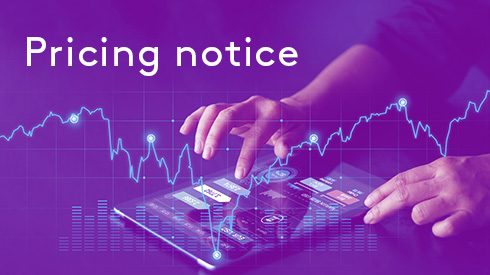Sources said the higher COMEX copper price was dragging up the London Metal Exchange copper price.
Last week, news spread that some traders with short positions on COMEX were being squeezed by the drastic increase in prices. And that squeeze was largely responsible for the record wide spread between copper prices on the LME and COMEX copper prices, which came close to $1,300 per tonne at certain points last week.
“Hedge funds are leading the uptick in prices,” one producer told Fastmarkets.
“A lot of money is being deployed in copper,” Concord Resources head of research, Duncan Hobbs said, adding that COMEX short covering had played a significant role in the move.
The fact that the COMEX copper price rose prior to LME movements highlighted the fact that funds played a dominant role in the uptick, according to Amalgamated Metal Traders head of research Dan Smith.
“The US dominates global capital markets and US investors are more likely to trade on COMEX (because it is a domestic US exchange) rather than on the LME. COMEX copper is therefore favored over LME copper,” Smith told Fastmarkets.
ANZ commodity strategist Daniel Hynes said the “short squeeze on COMEX supercharged the rally.”
And a trader said: “There is a mad rush to buy material as people are squaring positions.”
Other market participants said that the hedge funds positioning and short covering that appears to be causing price movements may not be led by firm fundamentals.
“I think that the copper price is wildly over-inflated,” a second trader source said. “The issue is that funds don’t really know what they’re doing on the fundamentals. They misconstrue stuff really easily. They’re looking at the short squeeze as indicative of a tighter market, when actually its more technical than that, because the majority of LME stock isn’t deliverable into the CME.”
“The banks have jumped on it and are pouring gasoline onto the fire; but, in reality, they don’t really know what’s going on,” the trader source added.
But some market participants said they were worried that if financial investment has inflated copper, then the price could come down when those funds exit their positions.
“There are one or two nerves about what happens when the funds look to take profit,” Hobbs said.
Fastmarkets analyst Boris Mikanikrezai said the copper price rally was likely to continue in the very near term, “especially in an environment that shorts are forced to cover their positions and hedge funds pile into long positions.
“But we think that prices are getting ahead of their fundamentals, raising the likelihood of a painful correction later this year,” he added.
The copper price has already fallen from the new high, however, and was most recently at $10,600 per tonne – already 4.5% lower than the highs seen early this week.
“Copper’s rally cooled amid concerns it may be running ahead of the weak fundamentals,” said Hynes.
And several sources compared the uptick in copper prices with the recent fund positions that supercharged other commodities prices, such as cocoa and coffee.
“There is so much tourist money it’s insane – the hedge funds have rolled into coffee, rolled into cocoa and [are now rolling into] copper,” the second trader source said.
Coffee and cocoa prices on Intercontinental Exchange contracts pushed up over the first four months of 2024 and peaked in April – with coffee up by 29% on April 17 and cocoa up by 179% on April 19. Since those peaks, funds have moved away from the two markets and the contract prices have moved down again – by 14% for coffee and by 37% for cocoa, sources told Fastmarkets.





